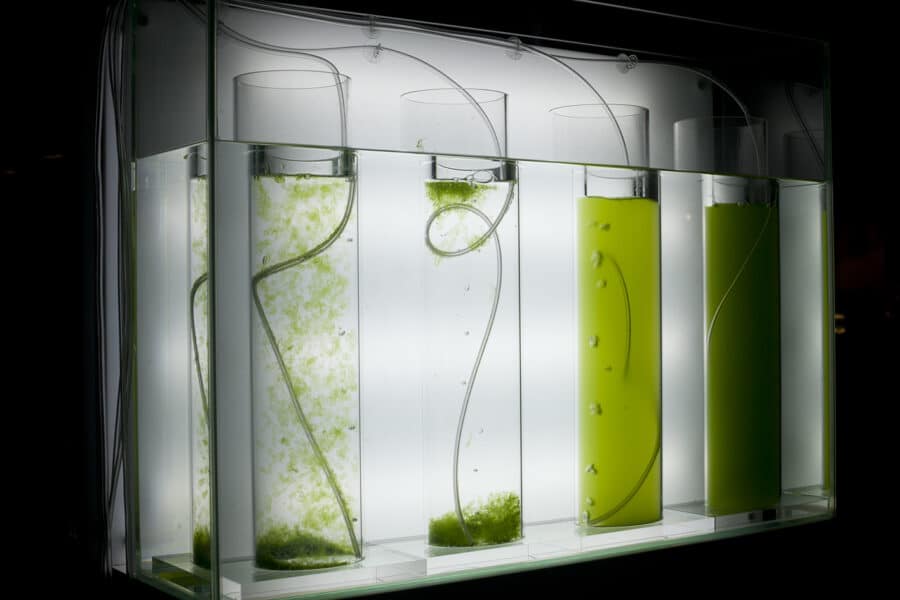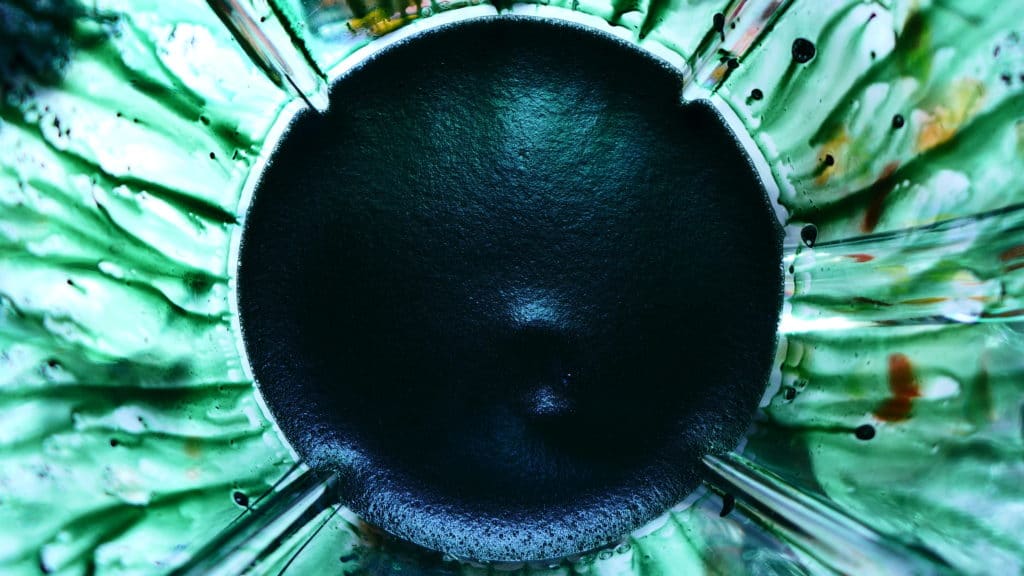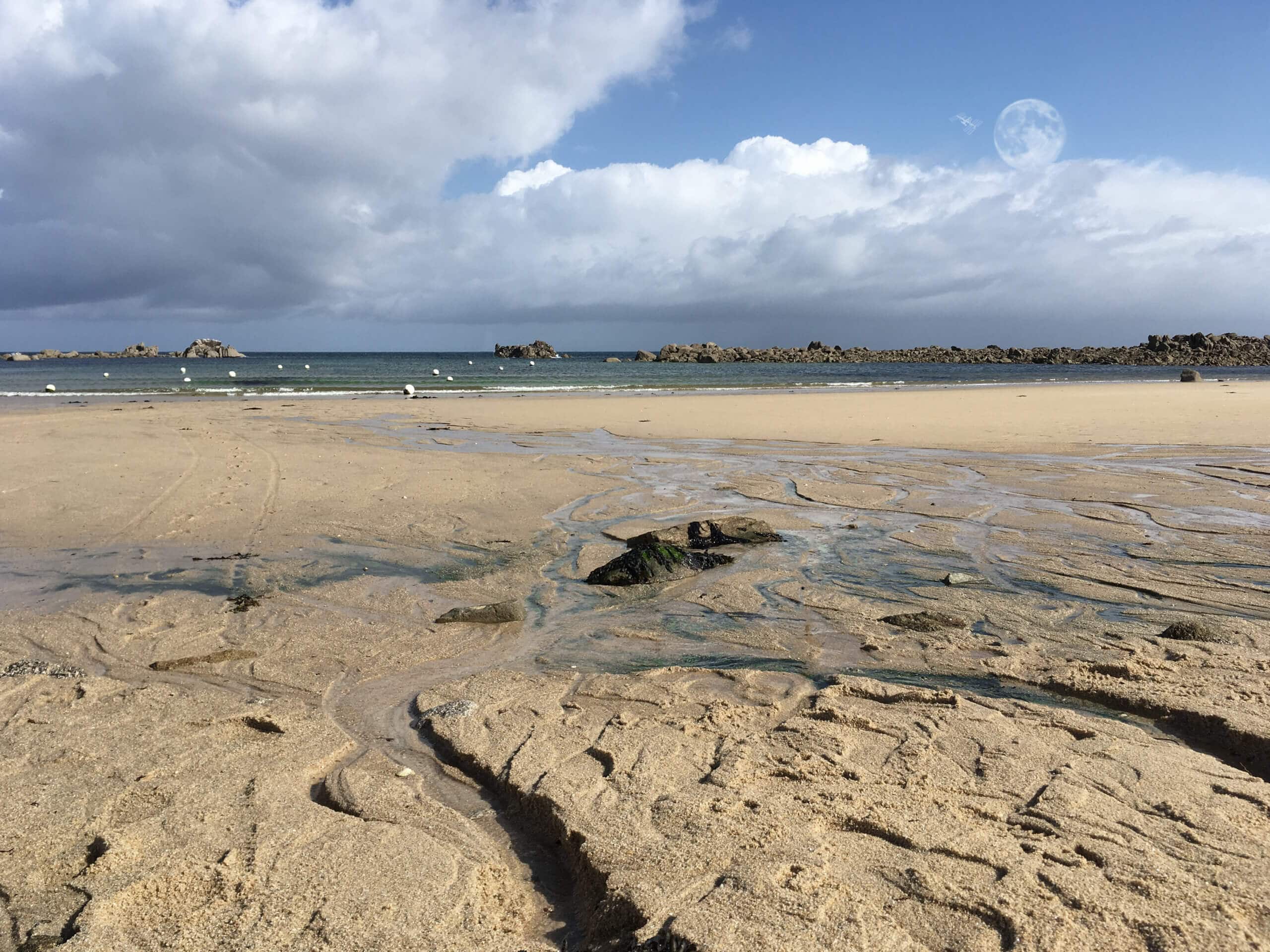In 2013, when the idea for the art & marine biology platform1 with the Multicellular Marine Models laboratory of Roscoff Marine Station emerged, I was greatly inspired by Xavier Bailly’s work on the “animalgae” Symsagittifera roscoffensis, and the fact that evolutionary biologist Lynn Margulis mentioned it repeatedly to evoke her theory of symbiosis and the idea of a Homo Photosyntheticus. So when, at that same time, I heard about the art project Humalga: Towards the Human Spore by Špela Petrič and Robertina Šebjanič of Slovenia, I was intrigued by the connections – and would even say that they strongly inspired this platform. For this reason, in 2015, it seemed obvious that these two artists would be the first to be invited for the residency at the Roscoff Marine Station. The following year, they swam2 in Jean Painlevé’s wake at the Roscoff Marine Station. Our collaboration is still ongoing today.
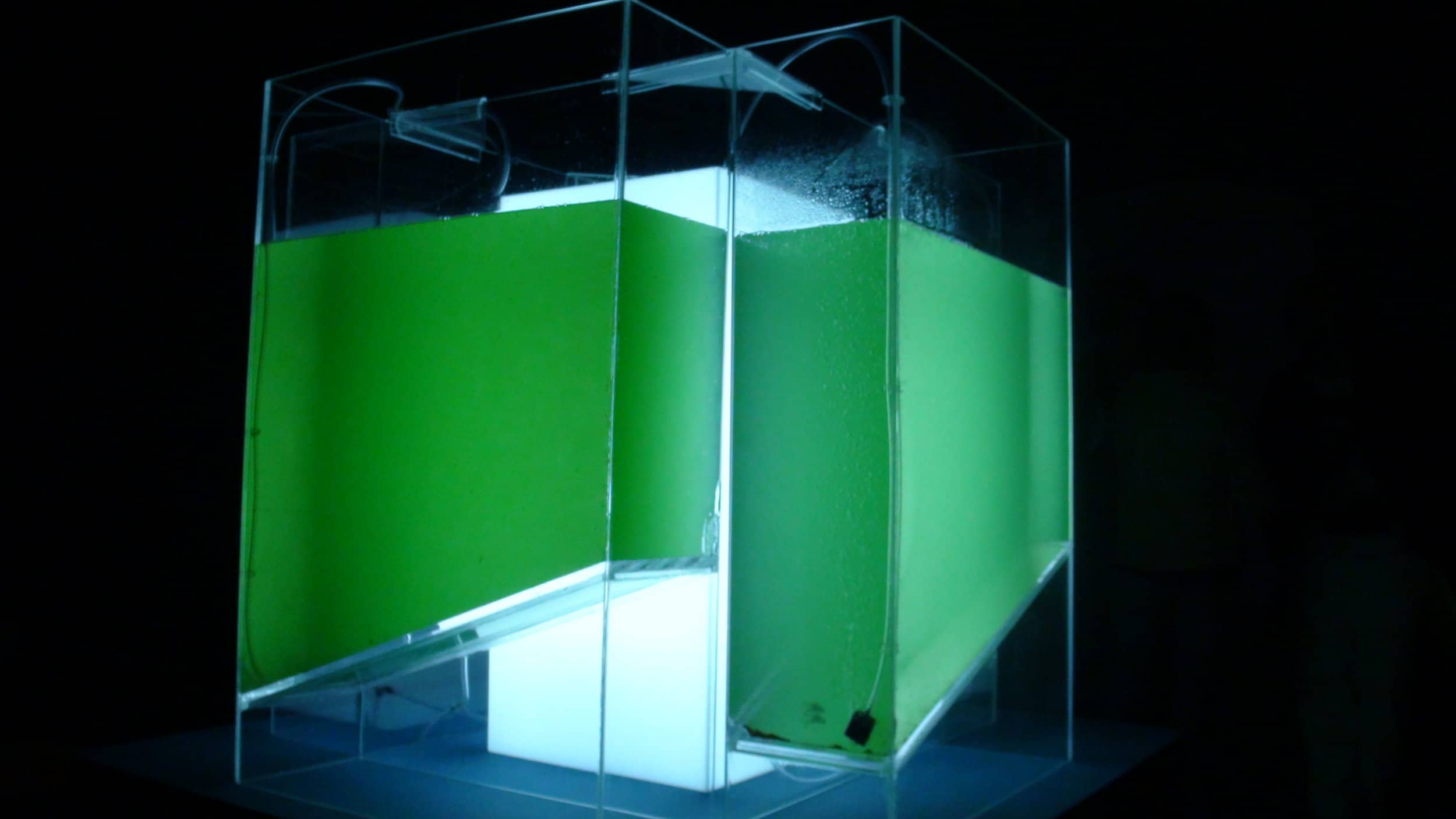
The Humalga project proposes an alternative, constructed evolution of the human species, at the intersection of human and algae, evolving toward humalga. With Humalga, the artists propose installations of biological art, jointly with publications, symposiums and theoretical contexts for speculation on a transspecies that is created biotechnologically, through the hybridization and genetic modification of humans and alga in such a way that both organisms appear as morphologically distinct living entities, which xenogenetically alternate as sexual and asexual generations. As Šebjanič explains on her website, Humalga “explores the human instinct to survive as a species, assesses the project within the current ecological anxiety, considers the implicated bioethical issues and envisions future scenarios involving the humalga.”

Photo Damijan Svarc. https://jeudepaume.org/humalga-robertina-sebjanic-spela-petric-homophotosyntheticus/
Central to the art piece, the artists propose public “wet symposiums” mediated by the engagement of experts/researchers contributing to the very creation of the artwork. I was particularly interested in how, during the symposiums (including one I had to pleasuring of organizing at the Festival Accès(s) in Pau in 2013), the artists propose a transient cross-disciplinary field called terRabiologie (terra (Latin) – Earth, tera (Greek) – monster), to examine the psychology, physiology and biology of the trans-species humalga. As Petrič states, “as a composite projection, the humalga is a heuristic tool that alienates us from the normal, continuous, anticipated future, and by doing so allows us not only to observe paradigms and contexts, which define humankind, but is also as an application of a novel discourse, terRabiology.”
In 2015, to develop the project further, I also invited Petrič to explore this concept in The Laboratory Planet 5: Alien Capitalism3.
According to her, terrabiology “frames an ontological perspective on life on Earth, contemplates the position of the human within the terraformative system and understands the human culture as an epiphenomenon of the self-aware species. It is an attempt to form a theoretical vantage point extraneous from Earth as a biosphere.The prefix terra can be read as terra, pertaining to the Earth, or as tera, derived from teras, the Ancient Greek word for monster. The latin word terra refers to the fact the discourse is centered around the ontology of life on Earth. Tera implies the fear of otherness (symbolized by monsters), a challenge to be overcome when undergoing the transition from a hegemonic essentialist approach to species to the concept of fluidity and multiplicity contained within categories, which become heuristic ascriptions rather than being descriptions of reality. Terrabiology thus questions the human disposition in relation to fundamentally different forms of organization, which can yield successful systems exhibiting life-like properties.”
Questioning the limits of current scientific knowledge, Humalga encourages us to think about contemporary visions of the body and reconsider the impact of such speculative propositions on art and society.
Ewen Chardronnet
Video interview: Ewen Chardronnet and Maya Minder
Cinematographer: Sandra Bühler
Translation and subtitles: David Bernagout
Humalga: the project
Humalga: Towards the Human Spore is an art and research project proposing an alternative, constructed evolution of the human species. It explores a biotechnologically engineered post-technological vehicle, which grants humans the resilience of simple, undifferentiated organisms while preserving the human phenotype, behavior and culture.
Biotechnologically the proposal involves creating a transspecies, the humalga, by genetically hybridizing and modifying the human and alga in such a way that both organisms appear as morphologically distinct living entities, which xenogenetically alternate as sexual and asexual generations. Through wet media installations and theoretical essays the project both examines state-of-the-art and pending technologies facilitating the creation of the novel transspecies with proof-of-concept experiments and, moreover, through its radical position exposes numerous biases and controversies of the present time. Amongst others, it explores the human instinct to survive as a species, assesses the project within the current ecological anxiety, considers the implicated bioethical issues and envisions future scenarios involving the humalga.
Špela Petrič & Robertina Šebjanič

Špela Petrič and Robertina Šebjanič, Humalga, Micro-injection of chloroplast into zebrafish cells, The National Centre for Biological Sciences (NCBS), Bangalore, Inde, 2013 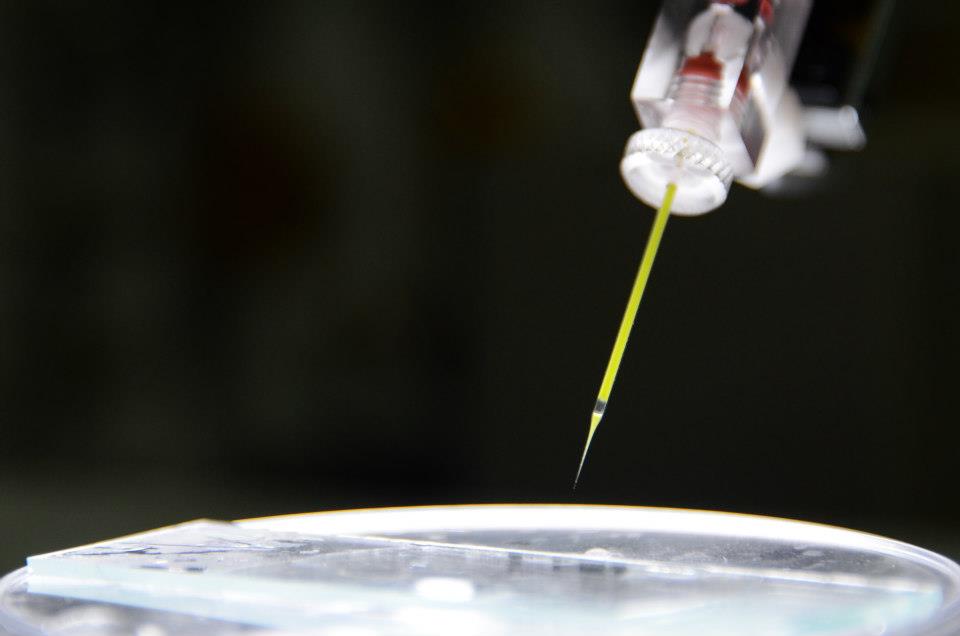
Špela Petrič and Robertina Šebjanič, Humalga: Towards the Human Spore, Micro-injection of chloroplast into zebrafish cells, The National Centre for Biological Sciences (NCBS), Bangalore, India, 2013 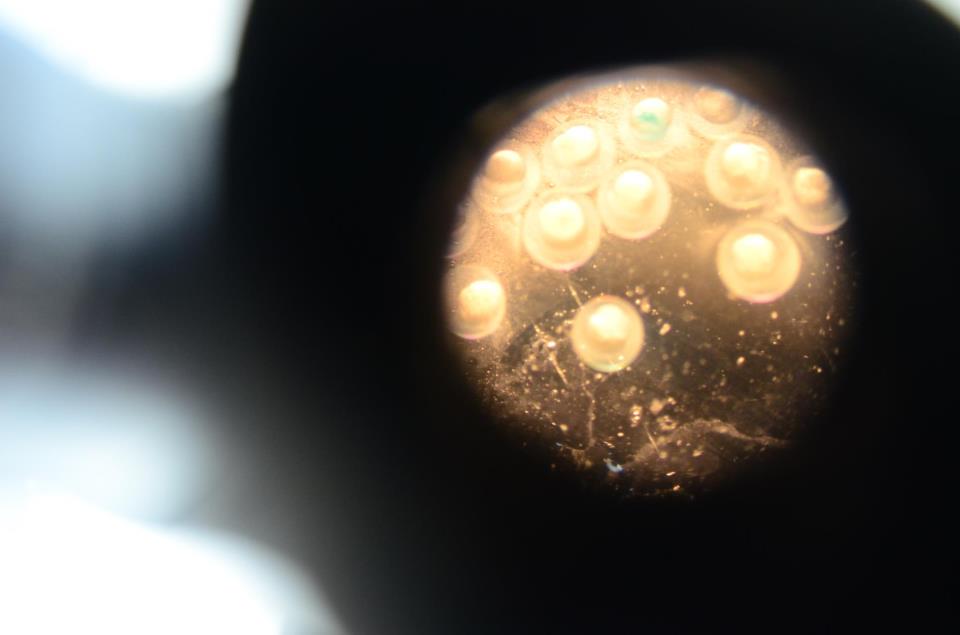
Špela Petrič and Robertina Šebjanič, Humalga: Towards the Human Spore, Micro-injection of chloroplast into zebrafish cells, The National Centre for Biological Sciences (NCBS), Bangalore, India, 2013 
Špela Petrič and Robertina Šebjanič, Humalga, Wet symposium, 2013 
Špela Petrič and Robertina Šebjanič at Kapelica Gallery, Ljubljana , 2013
Endnotes
1 https://roscosmoe.org
2 With Carole Thibaud – https://roscosmoe.org/carole-thibaud/
3 https://laboratoryplanet.org / Issue 5 of Laboratory Planet was supported by the virtual Jeu de Paume.
